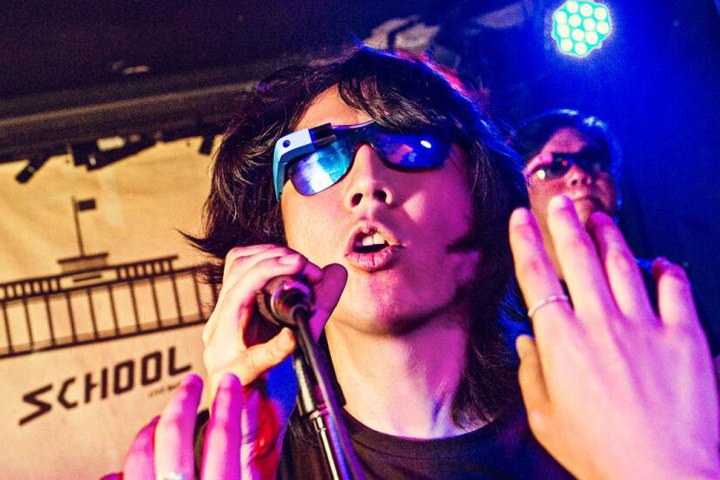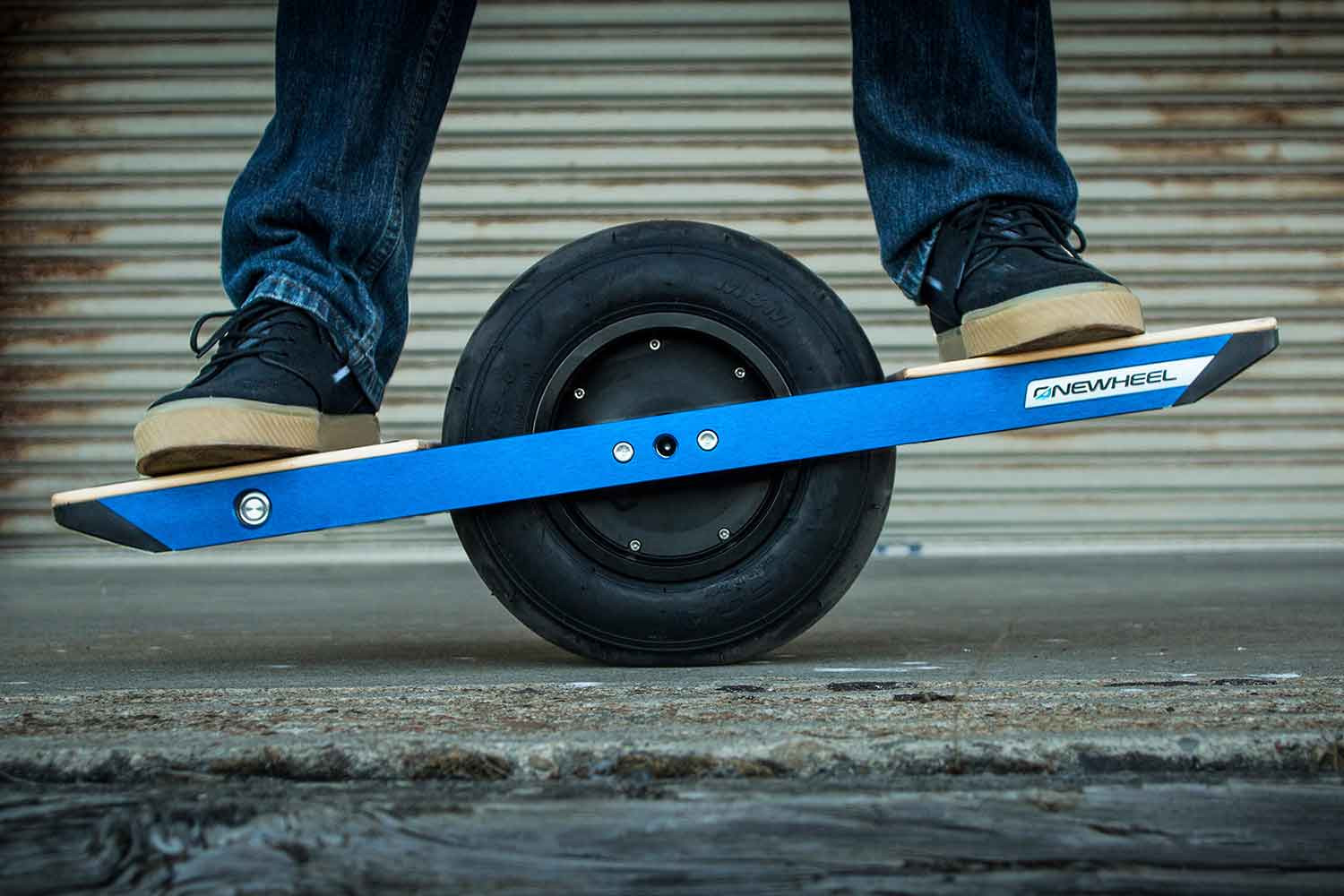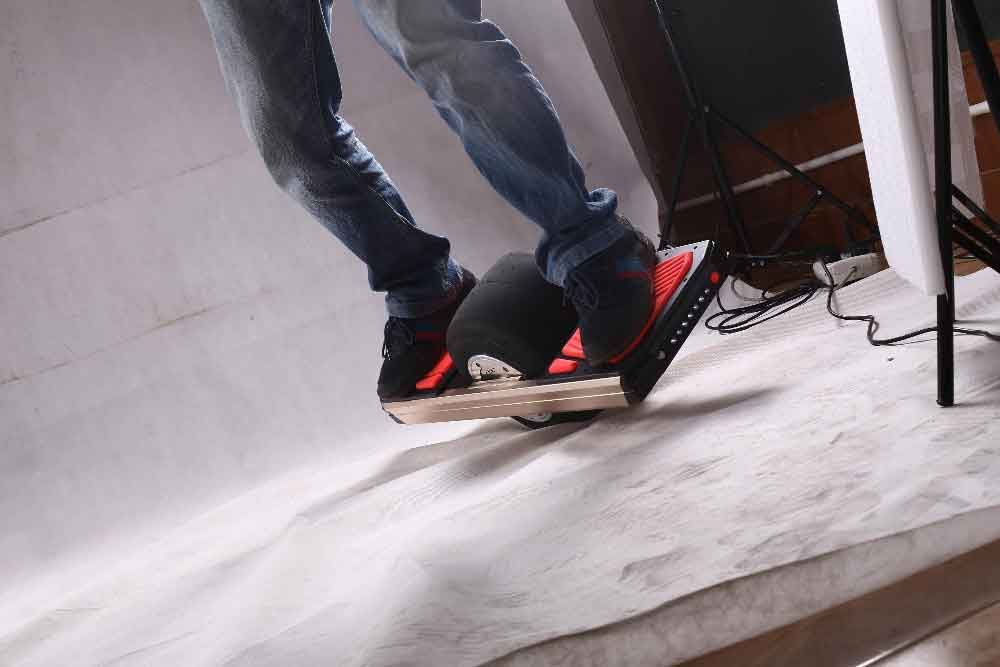
The booths stretch on and on at CES Asia 2016 — so do the company names. Each holds enticing new technologies and gadgets, robots and smartphones, fridges with screens and cameras, fitness bands and fast cars, the works.
And just when you’re thinking wow, this is all just so amazing, there’s …. this.

A Chinese company calling itself AltoTech makes and sells a product that is quite clearly Google Glass. It has the same wire frame, the same thick arm to hide its electronics, and the same chunky plastic screen that sits over your eye to show you the world around you.
But it’s not Google Glass. It’s “Cool Glass.” Instead of saying “OK, Google, direct me to the nearest Starbucks,” you say “OK, Cool Glass,” and follow that up with some commands in Chinese. I couldn’t quite pronounce them correctly when I tried it on, but you get the picture.
No, the company repeatedly told me, when I asked whether it was Google Glass. This is Cool Glass. We made this.
Clearly, you did not. And the rampant design copying that has fueled China’s tech ascendance may also be the glass ceiling preventing it from playing with the big boys.
The good, the bad, and the flat-out stolen
There are two facets to a trade show like this. On one side, innovative companies making astonishing new things we’ve never seen before. There are hundreds of them here, with big ideas and bigger dreams. On the other side are companies making a living by simply stealing someone else’s ideas.
“Since so many consumer products are manufactured overseas, it’s hard keep the knock-off horse in the barn, so to speak, without a lot of monitoring,” Stuart Soffer, an intellectual property expert and former Fellow at the Stanford Law School Center for Internet and Society, told Digital Trends.
Companies are making a living by simply stealing someone else’s ideas.
CES Asia has a knock-off, of course, from a company called Detu. And it ain’t half bad.
“Detu has some original 360VR cameras that look amazing, and the Theta knock-off seems a lot better than the Theta,” said Michael Artsis, a journalist with BeTerrific.com who attended CES Asia. “The question is, are they copying or continuing to innovate? In the U.S. we believe they are copying. Here in China they are ‘improving existing architecture’ and think nothing of it, even if they make more on a product than the OEM who had all the R&D and marketing costs.”
CES Asia: Drone cages, smart cars, and unrelenting hordes in our CES Asia VR tour
Detu’s Theta copy is so shameless, it uses the Theta app on iOS to operate the camera, and to store and share videos, Artsis says. “It was unbelievable,” he added.
Hoverboards galore
The hoverboards you see everywhere make an ideal example of China’s copying conundrum. As many as 11,000 Chinese factories make them, according to one report, and numerous companies showed them off at CES Asia as well. A wonderfully reported Buzzfeed article from last year details how ideas and products spread here in China:
Call it memeufacturing. It starts when a (typically) Western company, eager to cash in on a product made popular by the social internet, contracts a Chinese factory to make it. From here, the idea spreads throughout the elaborate social networks of Chinese electronics manufacturing until the item in question is being produced by hundreds and hundreds of competitors, who subcontract and sell components to each other, even as they all make the same thing.
Who invented this technology? According to a recent Guardian article, it’s a guy named Shae Chen, who developed and patented the hoverboard design in his lab on the U.S. West Coast four years ago.
“We only made maybe a few thousand,” Chen told the Guardian. “They made more than a million.”
Across the Pacific, this doesn’t sit well. At this year’s main CES event in Las Vegas, federal marshals stormed the booth of a Chinese company that was allegedly copying the work of a Santa Cruz, California maker of one-wheeled balance boards. The officers carted off a prototype and product literature before the reportedly stunned eyes of Changzhou First International Trade Co. employees.
- 1. Future Motion Onewheel
- 2. CFITC Trotter
“It’s ‘cat and mouse,’” explained Soffer, who is also co-author of “The Thesaurus of Patent Claim Construction.” He noted that it may be difficult for a knock-off product to hit U.S. shores, and stopping them takes time — and proof of a crime.
“Initially, those allegedly copied products, to the extent that they have U.S.-patented features, may have a tough time getting to market here in the U.S. The U.S patent holder could bring an action in the U.S. International Trade Commission (ITC). This would take time — and the remedy is an injunction preventing importation into the U.S. But you first need evidence of some importation into the U.S., which is what the Las Vegas CES provides.”
CES 2016: U.S. Marshalls raid a Chinese hoverboard maker’s booth at CES
The ITC sounds like the solution. But courts don’t always act swiftly. Just ask Segway.
Remember the New Hampshire
Bedford, New Hampshire-based Segway promised to transform the “personal mobility space” when it introduced its first self-balancing Personal Transporter in 2001. It followed up in 2005 with the Cross-Terrain Transporter (XT), and improved on it a year later with the X2. It features knobby tires and a ruggedized look and feel. It’s quite distinctive, really. Yet it’s no longer alone.
A company called Chic (Hangzhou Chic Intelligent Technology Co Ltd., to be precise), sells a product that looks for all the world like the Segway X2. Don’t take my word for it, though. You be the judge:
- 1. Chic-Cross
- 2. Segway X2
Chic was exhibiting its array of products at CES Asia, of course. I stopped by the booth, where a Chic representative told me the company manufacturers the device itself. Sure, it looks like a Segway, but this one is ours. The company calls it the Chic-Cross. A product brochure notes “completely independent intellectual property rights.”
Not every company selling self-balancing products owes a debt to Segway, of course, much less royalties on the company’s patents. But Segway thinks many of them do. Last year, at Segway’s behest, the U.S. International Trade Commission opened an investigation into the company’s claim that a Chinese company called Ninebot, among others, infringed its patents and copyrights. (Chic was not cited in the investigation.)
Courts don’t always act swiftly. Just ask Segway.
Read that again. Better yet, let me sum it up more succinctly: Segway, a U.S. company that invented this product category, was bought by a company that appears to have illegally copied it. A year too late to help Segway, the ITC concluded that the company was right. A March 16, 2016 ruling blocked importation of “all products from all sources that infringe a broad patent covering Segway’s Personal Transporters.”
Segway declined to comment when asked about the case.
The amazing … and all the rest
Some gadgets at CES Asia defy this expectation by being so unique, you won’t find them anywhere else, thanks to Chinese ingenuity. Take Dlodlo, which makes virtual-reality gear that fits into a pair of sunglasses. The company says it’s only 16 mm thick and just 78 grams, and claims V1 will ship in September. The company wouldn’t let me try on the glasses, nor was I allowed to even hold them. But if they’re ever released? Wow.
“China has a different culture more accepting of copying.”
There’s more esoteric stuff as well. I saw brainwave scanners, relaxation devices, air purifiers, smart air conditioners, and virtual reality, augmented reality, unreal reality, reality reality. Row after row after row.
But then there’s row after row of products that look awfully familiar. Knock offs of Samsung’s Gear VR headset, or Segways, or whatever. This wouldn’t fly in the U.S., but in China, it’s a different game, explained Gary Shapiro, president and CEO of the Consumer Technology Association (CTA) trade group, which puts on the CES events.
CES Asia: Robopups, robopals and robolackeys hit the Robot Runway at CES Asia
“China has a different culture more accepting of copying,” he told me. “Western governments have been working hard to move China to western standards, and by all accounts China has come a long way. But it is not quite there as the recent kerfuffle with Alibaba and the International Anti-Counterfeiting Coalition indicates.”
Shapiro is referring to a decision by the IACC’s decision to drop the Chinese retail giant’s membership two weeks ago, a mere month after it was allowed in, following complaints from Michael Kors, Gucci, Tiffany & Co, and others. Copying isn’t just a tech problem, of course. It’s rampant.
But the country is eager to address the problem.
“China wants to be an innovator and original,” Shapiro said. “That’s one reason why it has over 200,000 students in the U.S. at younger and younger ages … it hates the ‘copier’ label.”
On Friday, the ITC announced the latest investigation into hoverboards. Citing over two dozen companies, the investigation was prompted by a complaint filed by Cerritos, California-based Razor USA and the Camas, Washington-based company Inventist and Shane Chen. In the list of companies is Hangzhou Chic.
Citing its patents and intellectual property, Chic quickly responded, issuing a “patent statement” solemnly asserting its right to make hoverboards.
“A storm is coming,” a company rep told us.
Indeed.






